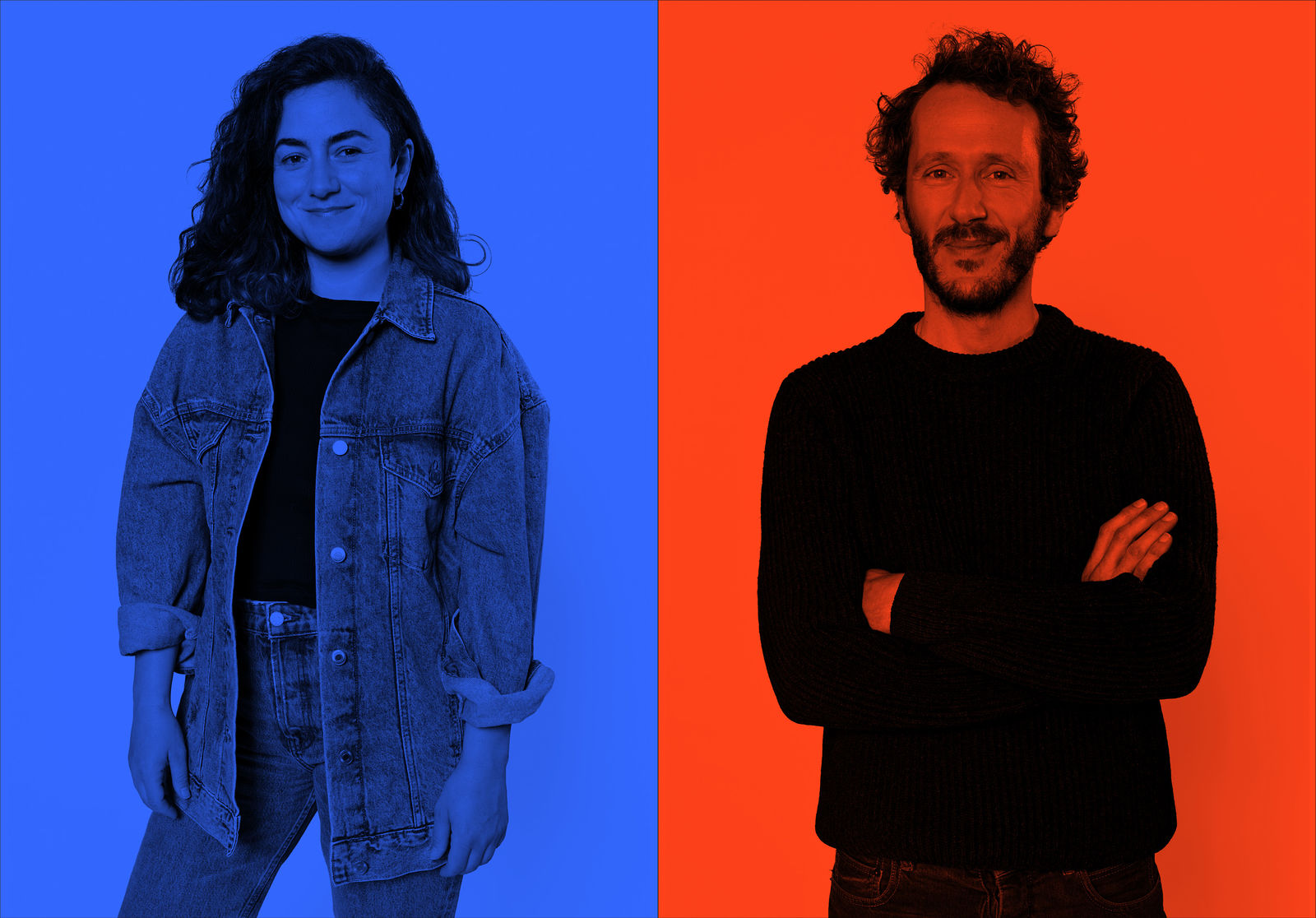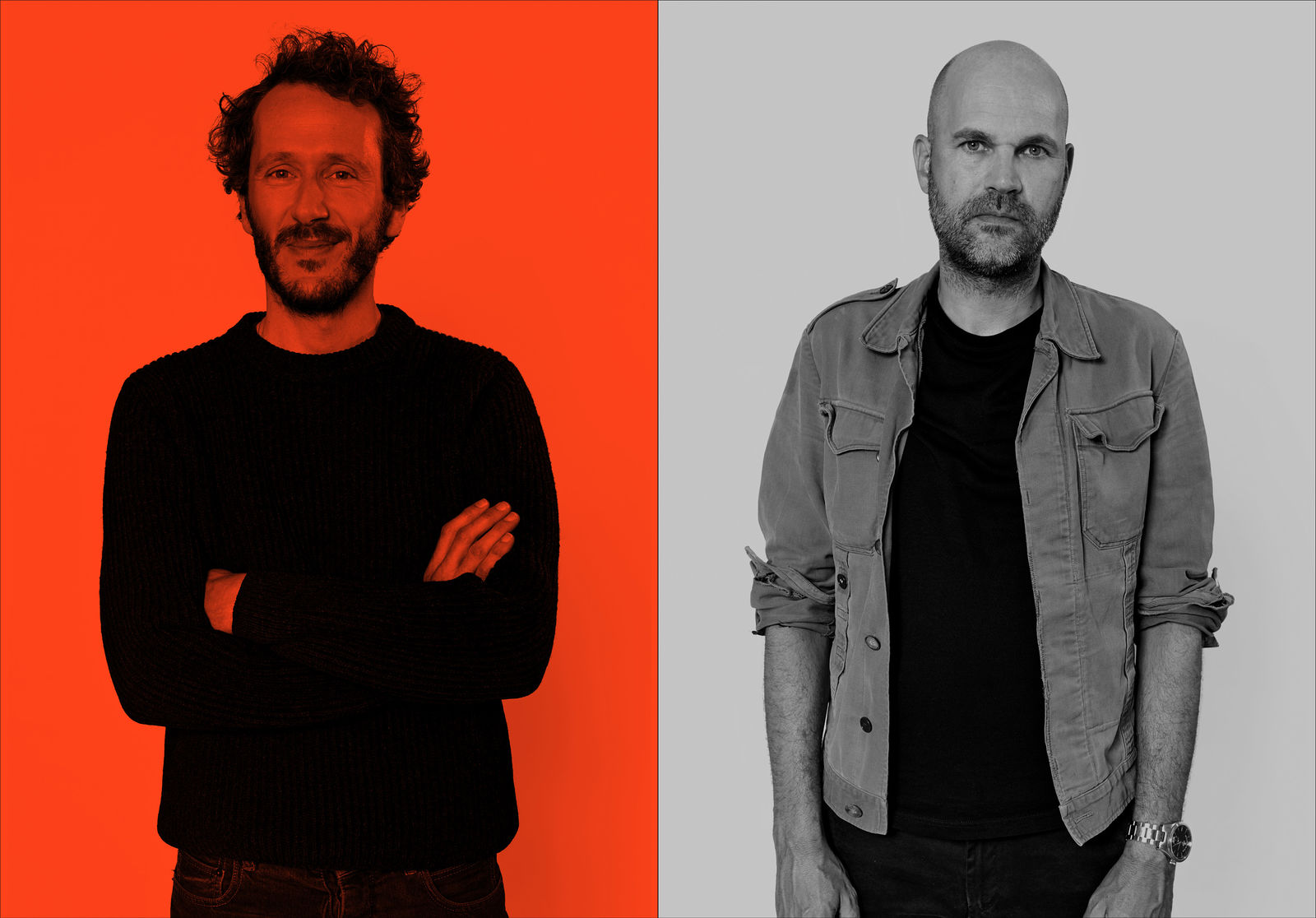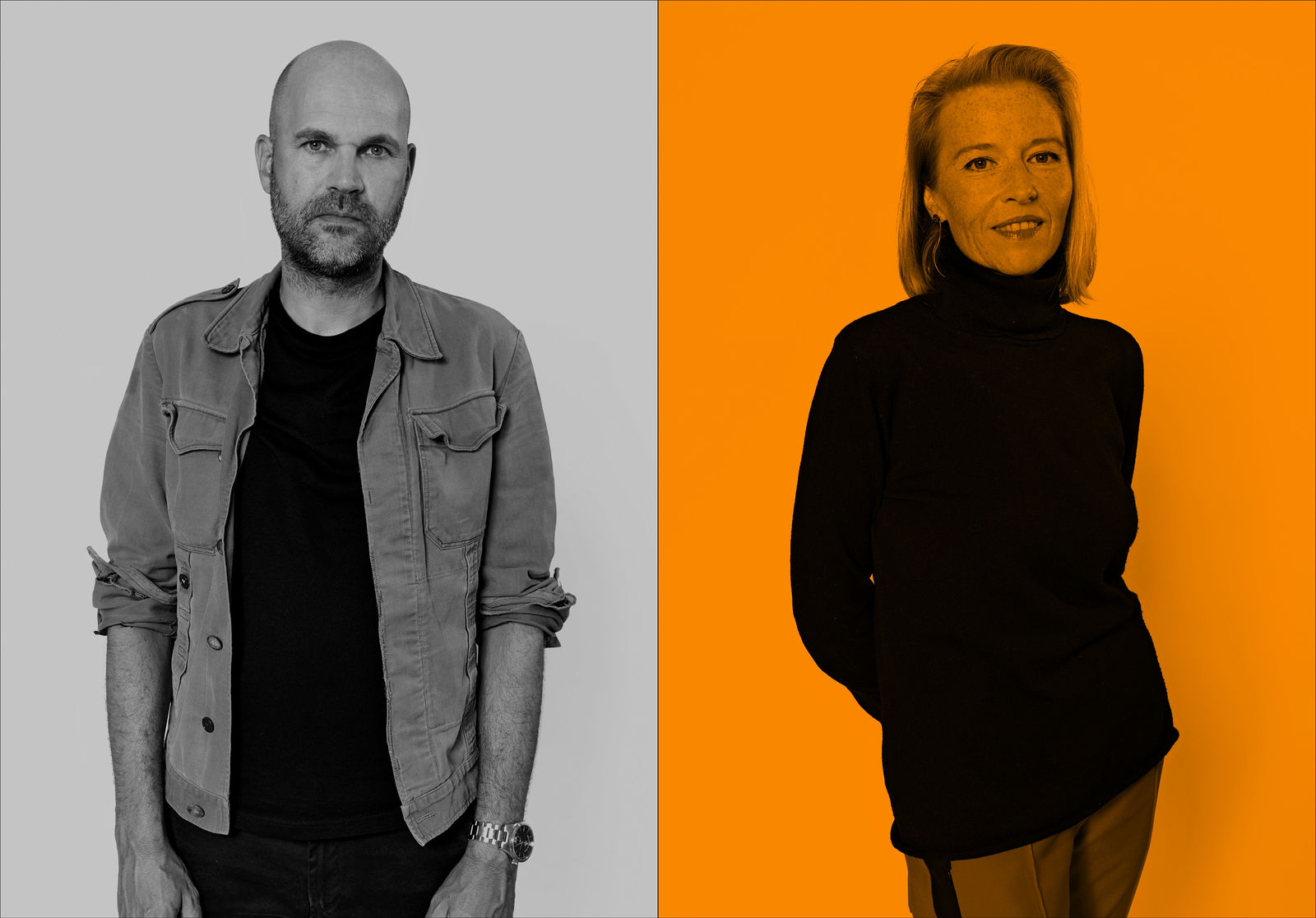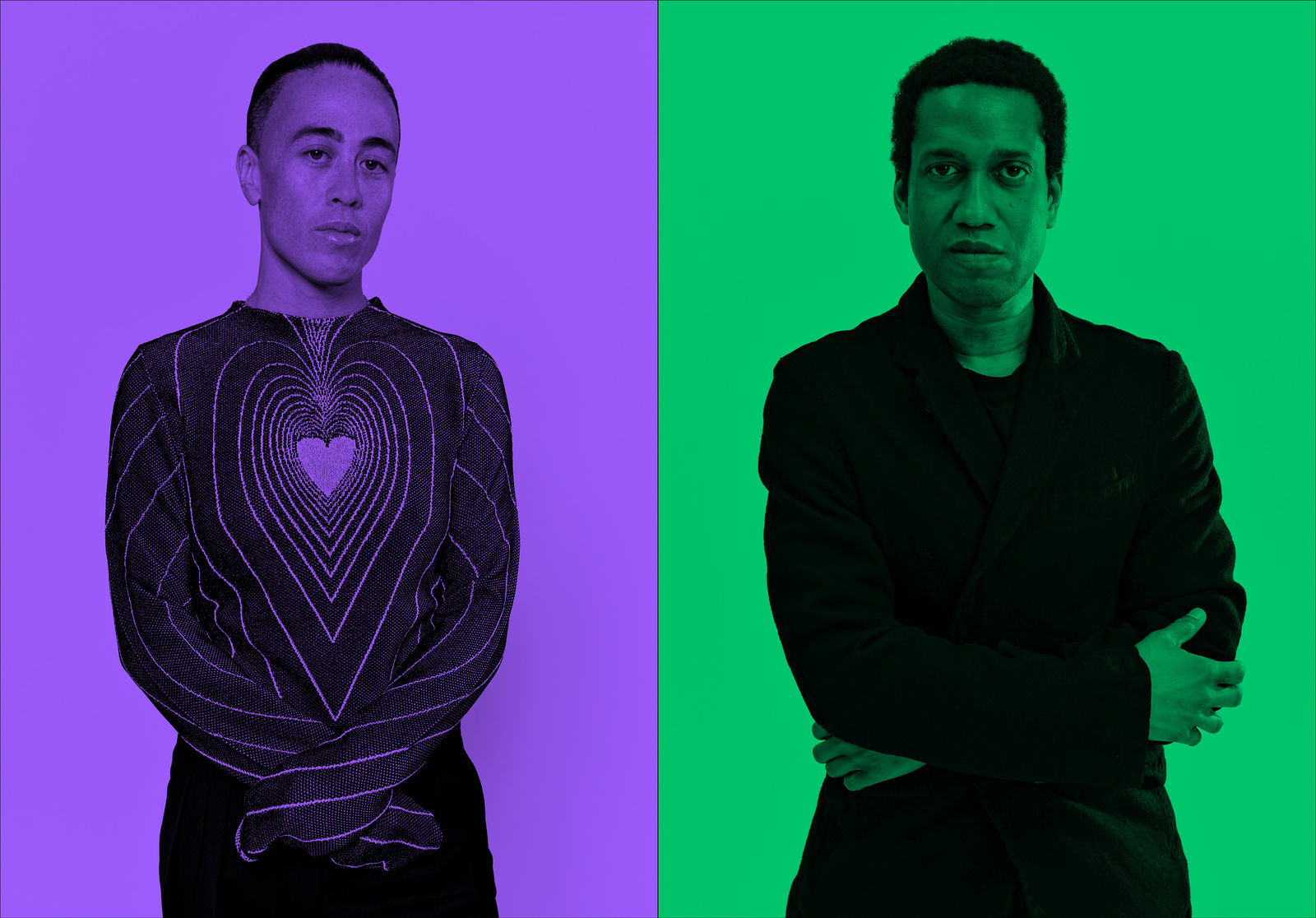Directors Talk:
Yana Ross and Wu Tsang
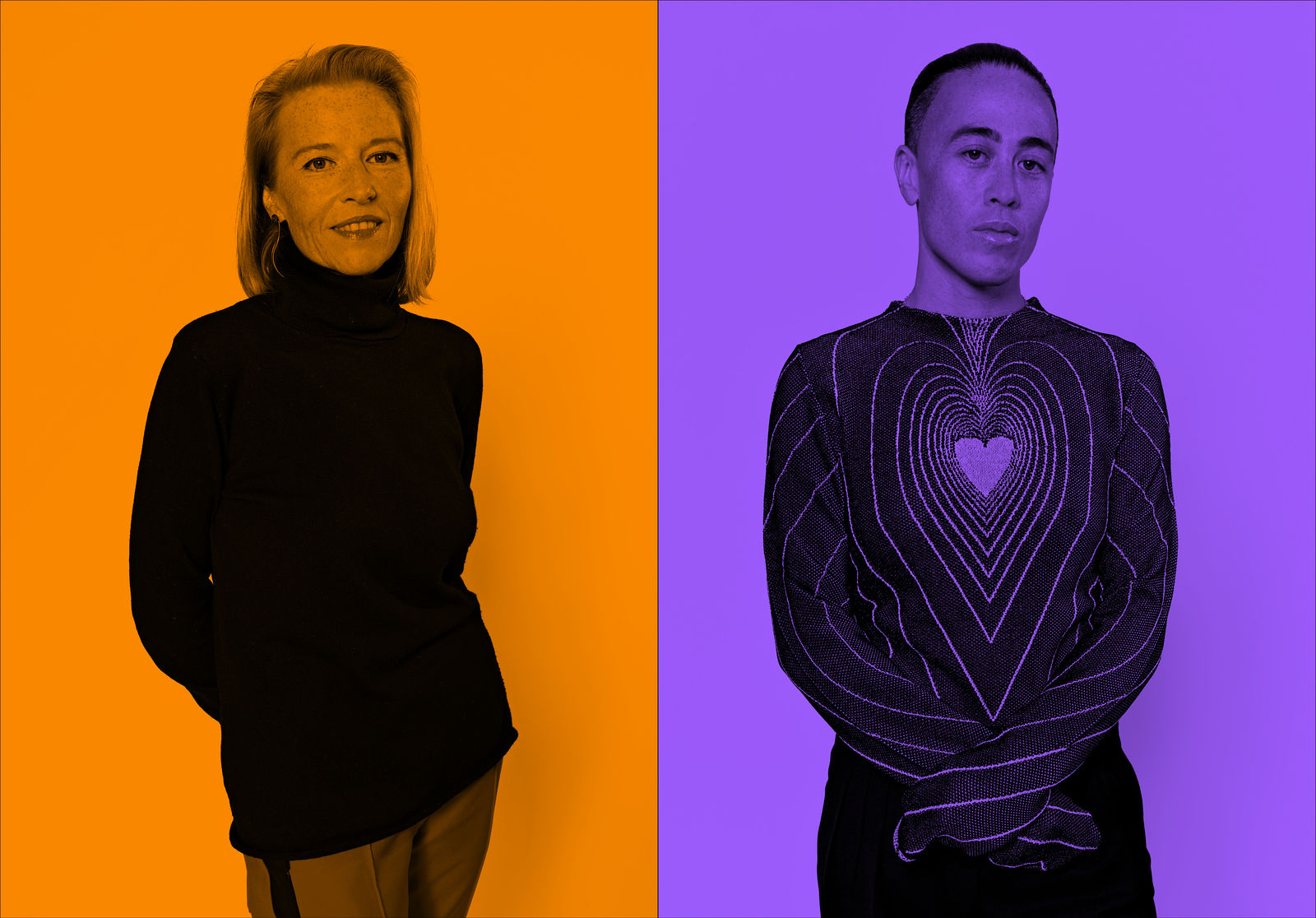
With the series Directors Talk you can bring our in-house directors Alexander Giesche, Suna Gürler, Trajal Harrell, Yana Ross, Christopher Rüping, Nicolas Stemann, Wu Tsang, and co-artistic director Benjamin von Blomberg along with you into the productions of the 2021/22 season in eight conversations. During the second lockdown they met on Zoom to talk about here, now, and tomorrow, mainly in pairs and once round-robin. The conversations are part of the season preview, which presents the 2021/2022 season and is available now in all our venues, as well as free to order online.
published on 27. August 2021
“It’s a ritual of a conscious look at toxic masculinity.”
[13:01] Yana Ross: Wu, what is your first, strongest visual experience? It can be really abstract. What’s the first image in life as a child that you can remember? Wu Tsang: This is an interesting question because I feel like all my memories are so visual! I associate being a child with everything being really vivid, like being on a mushroom trip. But… What I first thought of when you asked the question was that it reminds me of a question that I’ve always asked people: which was your first encounter with contemporary art? For me it was a contemporary art exhibition I saw in Copenhagen when I was 14. I was on a tour with my soccer team. One of the soccer player’s father was an art historian, and he dragged us to this museum, and I remember there was an exhibition called Sunshine and Noir, and it was about art from LA in the 90s. There were a lot of conceptual artists who were talking about the Rodney King beating and the LA riots.¹ There was intense imagery and also a Paul McCarthy installation. That’s what I thought of when you asked. I think this feeling of the intensity of an experience of someone young and still forming, you cannot put a value on it; it’s incredible. It’s so important that we have these encounters, it doesn’t matter where it happens. I remember something when I was maybe 17. By chance, eating ice cream with a friend, we walked into a basement, and there was a gallery, some random exhibition and it was called Milk and Honey. All the artwork was from a psychiatric hospital. Oh wow! People who spent their whole life in the institution. As a teenager, this went right through me. I did not read the context, I just went through the work, and this immediate immersion into this world of paintings and sketches was phenomenal. Interesting for sure. I mean not to in any way romanticize mental illness, but I think there is a lot of pathologizing of mental states. Exactly. Who’s to deem who’s unfit to function in society? And I think some artists are existing in those ways and are exploring those maybe consciously or unconsciously. You know, I often think the craziest people are all of us who are just following all the ways that society structured. I think making art is a way to explore outside the boundaries of that. And what was considered normative 50 or 100 years ago and what is now. I think there is a huge stigma on mental issues in the art community. I think it’s interesting that these people at certain points, let’s say a 100 years ago, were labelled or institutionalized… Are these themes you are exploring in your work? I think subconsciously, for sure. I am now going back to the history of feminist movement, I am going back to the history of gender studies and pornography, and of course to the question what is heteronormative. How do we create language and how do we deconstruct language? And also, I work in different cultures and countries, and I think I’m hypersensitive to language and this, let’s say, discrimination that is so inherent in some language cultures. But when something is beautiful, it really stands out. Like in Finland, there is no gender pronoun. It just doesn’t exist, it has never existed. They are all people. It’s all inclusive: one word for everybody. I noticed when I moved to Lithuania they have a word for a woman when she is menstruating. They use the word “sick”. And that’s the first thing I noted when I started learning the language. Or, the word for losing weight in Lithuanian means that you look bad. Or, when you gain weight, you’d say you look like you fixed yourself. Right, so that’s like a compliment you would say? Exactly. As if something was wrong with you and now you’ve fixed yourself. I am so fascinated by these discrepancies and this charged language when it comes to forming relationships between society, privacy and gender. It is all part of this framing of the work I am getting into now; it’s Kurze Interviews mit fiesen Männern, I refer to it as a requiem for masculinity at the moment because to me a requiem is a gentle way of laying something down. It’s a ritual of a conscious look at toxic masculinity and putting it down gently; and taking your time to put it down. I think this is a good time and moment in this context to take your time and put it down slowly. It’s really important that we don’t drop it like a bomb. So which work are you referring to? It’s based on David Foster Wallace. I’ve been with this writer for a while and I am always attracted to his incredible vulnerability. He unfortunately killed himself in 2008 in California. I think there is something in his language; you feel this big struggle of accepting the world, and accepting yourself, and not being able to do either. What is the process of translation like? I’m curious because one of the projects I’m working on for next year is Moby Dick, which is also a great American novel. How do you translate something that is written so beautifully into a live performance? It’s almost impossible. I think, in a way, a good translation is an act of exorcism. You know, as a translator, you really have to go inside someone else and then you bring something out that went through you. In my case, it’s interesting: the book is a collection of short stories, and there were different translators hired, and the book in German is also kind of polyphonic. Some translations really grasp this vulnerability and unique language, others are not on that level. Are you working with the German translation? I think we probably will, for the sake of the performance, use the German translation, but I don’t know. I always work with the original. Whenever I read Wallace, I’m always kind of seduced by this language. I’d like to reach the audience in a more direct way. I don’t want to have that barrier of another language in between; so, if we are losing a bit of something, but we are speaking directly in the language of the audience, I think it’s good. And how do you feel about Moby Dick? Do you feel the language does something for you? Yes, the language is what really drove me to the book. Well, I think several things drew me to the book: the iconism of it, the fact that it’s such a legendary book that everyone knows, but also very few people have read because it is quite long and quite verbose. Stylistically, it is all over the place; there is a bit of every kind of style. And Melville was trying to have this compendium novel that covered every single possible way of telling a story and every possible way to talk about a whale. Actually, one of the first things I did was I decided to make it a silent film, so that the language is basically gone. Because I think without it we are forced to find another way so we don’t end up trying to be loyal to the text. We use the text as we are developing the piece, but I think, ultimately, I’d like to let it go as much as possible. There’s this one passage in the book that I love where the men are all massaging the spermaceti, which is the oil in the sperm whale’s brain, which is the stuff they actually use to communicate with sonar. Apparently, it smells really good and is really good for your skin; and there’s this orgiastic scene where they are breaking up the fat of this whale and rubbing each other. And basically, they all end up rubbing each other as they are rubbing the blubber. He’s calling it spiralizing. So, that’s the metaphor my screen writer and I have been using, as in, we’re spiralizing the book. We’re massaging it and losing ourselves in it. And how did you find your collaborators working with our ensemble? Making a film is a very different process than a live theater. Basically, the month of May, we are going to be rehearsing a lot and then go straight to filming. So, it’s shorter and more intense, and then we just go. And I think one of the things I’m excited about with Moby Dick is that it creates a structure for a lot of people to be involved, because it’s, like, a whole ship of sailors and captains and first mates. I wanted to have this arrangement of many people and story lines that get told, but sort of abstractly, because even in the book, there is not that much that happens. They just sail and sail and sail forever. And they chase whales, and then they chase the big one, and then everybody dies. So that’s the story, but within that we can expand it quite a lot, into all different kinds of themes. Do you have a favorite moment in the book or is that the brain massage? The brain massage was what unpacked the whole book for me, but I wouldn’t say that it is the most important scene in the film. It’s still coming together. We are working on this virtual technology to create an ocean that we will project around the ship, and for me that’s a space where the story comes together, even though it’s not even the actors, it’s just the weather changing. I’ve read something on Wallace recently and one of the researchers focusing on the sense of loneliness and how you can really lose yourself in this vastness of loneliness mentioned a scene in Moby Dick with Pip being lost when he falls overboard; being in this vast landscape and losing sense of this reality since the world is so overwhelming, that was the parallel to Wallace and I thought: Wow, that’s interesting! Yeah, that’s super interesting that you describe that scene, because Pip became the most important character for us in our version of Moby Dick. Pip is sort of a secondary character, because they are the cabin mate, and they are around a lot, and things happen to them, but you never really get a lot of insight. The main character is of course the young, impressionistic, white sailor, and everything is told from his perspective. But in our version, Pip ends up being the main character. Beautiful! I like that scene where they fall into the sea. It’s a very important scene for us. They actually go down into the depths of the ocean and they discover the secrets of the universe. They carry them back to the surface, but we never have access. That is his and private. Yeah, exactly. And then something you can probably discover for yourself in extreme isolation. And I think this theme of isolation in the supersaturated society is where for me we somehow are starting to connect. I mean, especially now, don’t you think? Exactly! And I think these pieces, that’s what fascinates me, how our subconscious works, artistically… that people like you and I, who work in very different media, and process things differently, and with different methods, are also very much absorbing and processing and reflecting on this big gassy loud that we are swimming in, surrounding it, right? Yeah. Somehow, it’s a big force we are dealing with. Is that the theme present in both the projects, because you are doing two, right? Yes, I’m currently developing a second play based on a novel by the Austrian Arthur Schnitzler, but it won’t premiere this season. I am working on it together with contemporary writers. They’ll look at the text from the end of the 19th century from their point of view and from their personal experience. I encourage them as they’re writing to really take this here and now, being alive in this moment, in relationship to what is happening in the play; and I think really beautiful things are coming together. Even though the writers don’t know what the others are doing, the kind of big voice, the polyphonic voice in this is saying something very important about relationships, about two people meeting and trying to be intimate. Again, this question of vastness, of possibility, but also the extreme feeling of being alone or isolated is present. Even when you’re having an encounter with someone… what is left is you; you have to face yourself all the time. That is a collective experience most people are going through right now. Yes, and this extreme hypersensitivity to touch, to contact. And did you choose that story before Covid? Yes, we were just looking for terms of relationships, intimacy, sexuality or encounters. When Schnitzler wrote this, it was in Vienna, in this moment, in this very hedonistic moment where people were living it up, feeling like something is in the air, something is coming, this end of the world, WWI is about to break out. This hell, when you are really standing on the edge, so there’s some kind of charge in the way people were living in these extremities. And I feel there is still something… now we also are in very extreme circumstances as a society. So, it’s somehow really uncanny how this writing or this moment, this play working 100 years ago in those circumstances can be charged again somehow. I think we did well, Wu! We covered all our pieces. Yes, me too! Cool! It was nice to see you. Yes, see you soon. [13:46]
1 In 1991, the African-American Rodney King was the victim of blatant police violence in Los Angeles. After the acquittal of the perpetrators, riots broke out in LA lasting several days.
